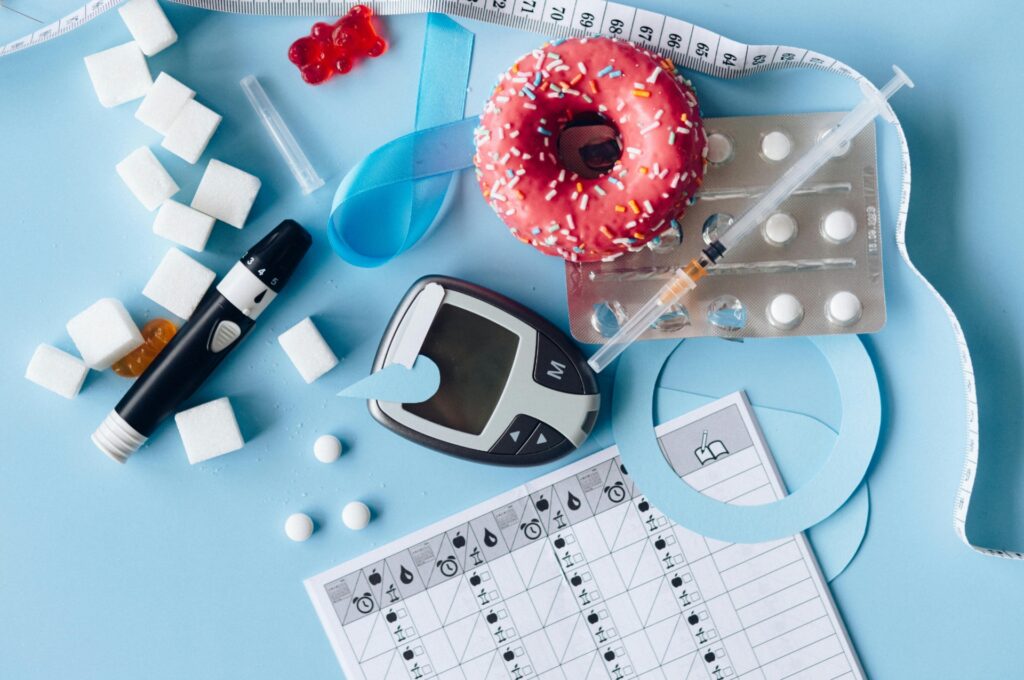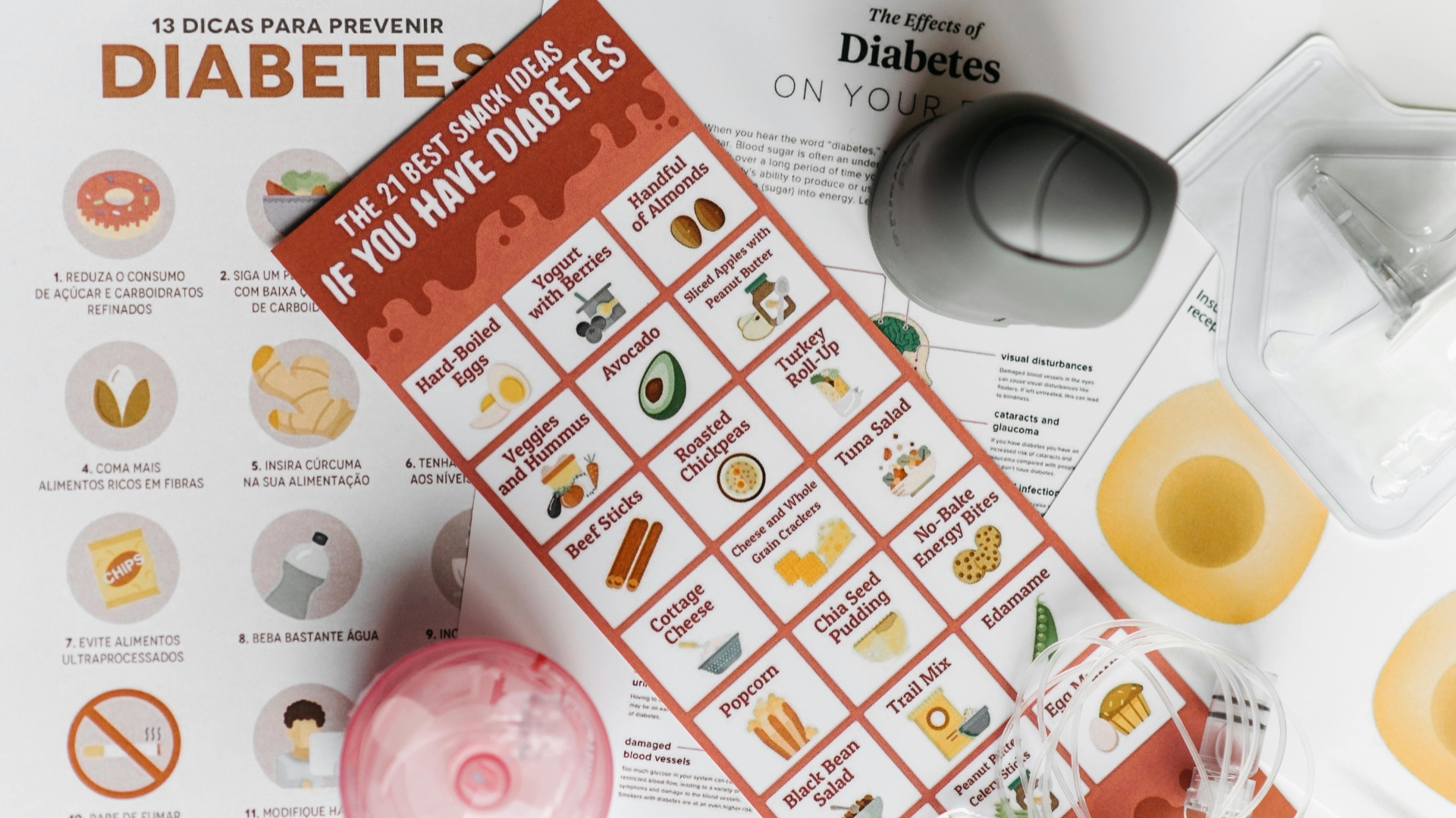Diabetes is a chronic condition that affects millions worldwide, making blood sugar management crucial for overall health. This guide explores key aspects of diabetes, including its causes, symptoms, and effective treatment options. We’ll discuss practical ways to lower blood sugar, recognize early warning signs, and manage the condition effectively. Additionally, we’ll highlight the best foods for diabetics and lifestyle changes that support stable blood sugar levels. Whether you’re newly diagnosed or looking to improve your management, this article provides essential insights to help you lead a healthier life.
What is diabetes?
Diabetes is a chronic medical condition that affects how your body processes blood sugar (glucose). Glucose is an important source of energy for your cells, but to use it properly, your body needs insulin—a hormone produced by the pancreas.
There are three main types of diabetes:
- Type 1 Diabetes – The immune system attacks the insulin-producing cells in the pancreas, leading to little or no insulin production. People with Type 1 diabetes need to take insulin daily.
- Type 2 Diabetes – The body becomes resistant to insulin or doesn’t produce enough, leading to high blood sugar levels. It is often linked to obesity, poor diet, and lack of exercise.
- Gestational Diabetes – Occurs during pregnancy when hormones make the body less responsive to insulin. It usually resolves after childbirth but increases the risk of developing Type 2 diabetes later.
Common symptoms of diabetes include excessive thirst, frequent urination, fatigue, blurred vision, and slow-healing wounds. If left untreated, diabetes can lead to serious complications such as heart disease, kidney failure, nerve damage, and vision loss.
Would you like more details on prevention, management, or treatment?
How to reduce sugar in blood?
Lowering blood sugar levels requires a combination of healthy lifestyle habits, dietary changes, and, if necessary, medications. Here are some effective ways to reduce blood sugar naturally:
1. Eat a Balanced Diet
- Limit simple carbohydrates – Avoid white bread, pasta, and sugary foods, which cause rapid spikes.
- Choose high-fiber foods – Whole grains, vegetables, nuts, and seeds help slow glucose absorption.
- Increase protein and healthy fats – Foods like fish, eggs, avocados, and nuts keep blood sugar stable.
- Avoid sugary drinks – Sodas, fruit juices, and energy drinks can raise blood sugar quickly.
- Stay hydrated – Water helps flush out excess sugar through urine.
2. Exercise Regularly
- Walking, jogging, or cycling – Physical activity helps muscles use up glucose.
- Strength training – Building muscle improves insulin sensitivity.
- Consistency is key – Even 30 minutes of moderate exercise daily can make a big difference.
3. Manage Stress
- Stress can raise blood sugar levels. Try:
- Meditation or deep breathing
- Yoga or stretching
- Spending time outdoors
4. Get Enough Sleep
- Poor sleep affects insulin function, leading to higher blood sugar. Aim for 7–9 hours per night.
5. Monitor Blood Sugar Levels
- Checking your blood sugar regularly helps track progress and avoid dangerous spikes.
6. Consider Natural Remedies
- Cinnamon – May help improve insulin sensitivity.
- Apple cider vinegar – Can lower blood sugar after meals when consumed in moderation.
- Fenugreek seeds – May help reduce blood sugar spikes.
7. Take Medications if Prescribed
If you have diabetes or prediabetes, your doctor may prescribe medications like metformin to help control blood sugar levels.
Would you like recommendations tailored to your specific situation?
What are 10 warning signs of diabetes?
Here are 10 warning signs of diabetes to watch for:
- Frequent urination – High blood sugar makes the kidneys work harder, leading to increased urination.
- Excessive thirst – Losing fluids through frequent urination causes dehydration and increased thirst.
- Extreme hunger – The body struggles to use glucose properly, leading to constant hunger.
- Unexplained weight loss – Despite eating normally or more, the body burns fat and muscle for energy.
- Fatigue – High blood sugar prevents cells from getting enough energy, causing tiredness.
- Blurry vision – High glucose affects the fluid levels in the eyes, leading to vision problems.
- Slow-healing wounds – Poor circulation and a weakened immune system slow down healing.
- Frequent infections – High blood sugar increases the risk of infections, such as skin, gum, and urinary tract infections.
- Tingling or numbness in hands and feet – Nerve damage (neuropathy) due to prolonged high blood sugar causes these symptoms.
- Dark skin patches – Acanthosis nigricans, darkened skin folds (neck, armpits), may indicate insulin resistance.
If you experience any of these symptoms, consider seeing a doctor for testing and diagnosis.
10 Early Signs of Diabetes
What is the best treatment for diabetes?

The best treatment for diabetes depends on the type of diabetes (Type 1, Type 2, or gestational diabetes) and individual factors. Here’s a general overview of the treatments for each type:
1. Type 1 Diabetes
- Insulin Therapy: People with Type 1 diabetes need insulin since their bodies do not produce it. It is injected or delivered via an insulin pump.
- Blood Sugar Monitoring: Frequent monitoring of blood glucose levels is essential to adjust insulin doses.
- Diet and Exercise: A balanced diet and regular physical activity are crucial in managing blood sugar levels.
- Continuous Glucose Monitors (CGMs): Some people use CGMs to track glucose levels continuously.
2. Type 2 Diabetes
- Lifestyle Changes: A healthy diet, regular physical activity, and weight management are fundamental. Losing weight can help improve insulin sensitivity.
- Oral Medications: Common drugs include Metformin, sulfonylureas, SGLT2 inhibitors, and DPP-4 inhibitors, which help manage blood sugar levels.
- Insulin Therapy: Some people with Type 2 diabetes may require insulin or other injectable medications if oral medications are not sufficient.
- Blood Sugar Monitoring: Monitoring glucose levels is important for tracking the effectiveness of treatment.
- Bariatric Surgery: In some cases, weight-loss surgery may be recommended for obese individuals with Type 2 diabetes.
3. Gestational Diabetes
- Diet and Exercise: Managing blood sugar through a healthy eating plan and regular exercise is often the first step.
- Blood Sugar Monitoring: Regular checks are needed to keep blood sugar in a healthy range.
- Insulin: If lifestyle changes aren’t enough, insulin may be prescribed during pregnancy.
General Considerations:
- Education: Diabetes self-management education (DSME) is vital for understanding how to monitor and manage blood sugar levels, medications, and lifestyle choices.
- Stress Management: Stress can affect blood sugar levels, so managing stress through relaxation techniques is important.
- Regular Check-ups: Regular check-ups with a healthcare provider are important for monitoring diabetes and preventing complications.
It’s essential to work with a healthcare team, including doctors, dietitians, and diabetes educators, to tailor the best treatment plan based on individual needs.
How do you manage diabetes?

Managing diabetes effectively involves a combination of lifestyle changes, regular monitoring, medications, and ongoing support from healthcare professionals. Here’s a step-by-step guide on how to manage diabetes:
1. Monitor Blood Sugar Levels
- Regular Testing: Checking your blood sugar levels regularly helps you understand how food, exercise, and medications affect your body. This can be done using a blood glucose meter or continuous glucose monitoring (CGM) system.
- A1C Testing: This test measures your average blood sugar levels over the past two to three months. The goal for most people is to keep A1C levels below 7%, but this may vary depending on individual circumstances.
2. Healthy Diet
- Carbohydrate Control: Managing carbohydrate intake is crucial. Focus on complex carbs like whole grains, vegetables, and legumes, and limit simple sugars.
- Balanced Meals: Include a balance of proteins, healthy fats, and fiber. Eating smaller, balanced meals throughout the day can help maintain stable blood sugar levels.
- Portion Control: Understanding proper portion sizes and meal timing is important to avoid spikes in blood sugar.
3. Exercise Regularly
- Physical Activity: Regular exercise helps improve insulin sensitivity, lower blood sugar levels, and maintain a healthy weight. Aim for at least 150 minutes of moderate-intensity exercise per week, such as brisk walking, cycling, or swimming.
- Strength Training: Include strength training exercises twice a week to help build muscle mass, which can further improve insulin sensitivity.
4. Medication Adherence
- Insulin: People with Type 1 or some with Type 2 diabetes may need insulin to help regulate blood sugar levels.
- Oral Medications: For Type 2 diabetes, medications like Metformin, SGLT2 inhibitors, and DPP-4 inhibitors may be prescribed to control blood sugar.
- Injectables: Some people may also need injectable medications such as GLP-1 receptor agonists.
- Follow Prescriptions: Take medications as prescribed and follow up with your doctor for any necessary adjustments.
5. Weight Management
- Healthy Weight: Maintaining a healthy weight or losing excess weight can significantly improve blood sugar control, especially for people with Type 2 diabetes.
- Mindful Eating: Being mindful of food choices and eating habits can prevent overeating and help with weight management.
6. Stress Management
- Relaxation Techniques: Stress can impact blood sugar levels, so managing stress through techniques like deep breathing, meditation, yoga, or hobbies is important.
- Adequate Sleep: Ensure you get enough rest, as poor sleep can affect blood sugar control.
7. Regular Check-ups
- Healthcare Visits: Regular visits to your healthcare team for check-ups and to monitor your diabetes control are essential.
- Eye and Foot Care: Diabetes can lead to complications such as retinopathy and neuropathy. Regular eye exams and foot checks are important.
- Blood Pressure and Cholesterol Management: Managing blood pressure and cholesterol is crucial for preventing complications associated with diabetes.
8. Diabetes Education
- Learn and Stay Informed: Educating yourself about diabetes and how it affects your body helps you make informed decisions about managing your condition.
- Support Groups: Joining a diabetes support group can provide emotional support and help you share experiences with others managing diabetes.
By following these steps and collaborating with a healthcare team, diabetes can be managed effectively, allowing individuals to lead a healthy life while minimizing the risk of complications.
Which food is good for diabetes?

For managing diabetes, it’s important to focus on foods that help maintain stable blood sugar levels and provide overall nutritional benefits. Here are some foods that are generally good for people with diabetes:
- Non-Starchy Vegetables: Leafy greens (spinach, kale), broccoli, cauliflower, and bell peppers are low in carbohydrates and high in fiber, which helps manage blood sugar levels.
- Whole Grains: Foods like oats, quinoa, brown rice, and barley have a lower glycemic index than refined grains, which can help prevent spikes in blood sugar.
- Lean Proteins: Chicken, turkey, fish (especially fatty fish like salmon, mackerel, and sardines), and plant-based proteins like tofu or lentils can help stabilize blood sugar levels.
- Legumes: Beans, lentils, and chickpeas are high in fiber and protein, helping regulate blood sugar levels.
- Healthy Fats: Avocados, olive oil, nuts, and seeds are sources of unsaturated fats that are beneficial for heart health and may help in managing diabetes.
- Berries: Blueberries, strawberries, and raspberries have a low glycemic index and are rich in antioxidants, which may help reduce inflammation and improve insulin sensitivity.
- Greek Yogurt: Unsweetened Greek yogurt is a good source of protein and probiotics, which can benefit gut health and help regulate blood sugar levels.
- Cinnamon: Studies suggest that cinnamon may help improve insulin sensitivity and lower blood sugar levels.
- Apple Cider Vinegar: Some research suggests that apple cider vinegar may improve insulin sensitivity and help lower blood sugar levels.
It’s also important to avoid foods high in refined sugars, processed carbohydrates, and unhealthy fats, as they can cause rapid blood sugar spikes. Always consult a healthcare provider or dietitian for personalized advice.
